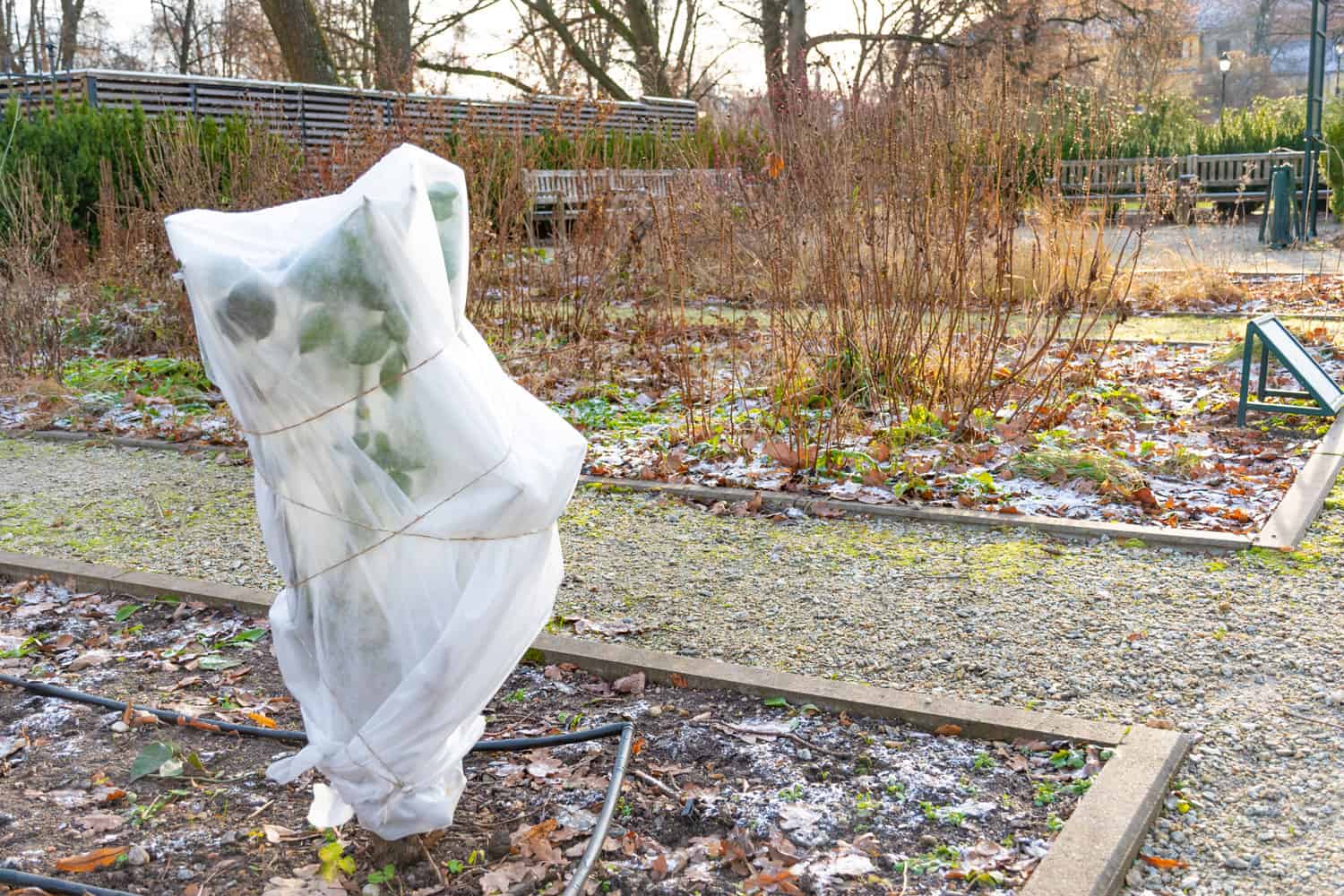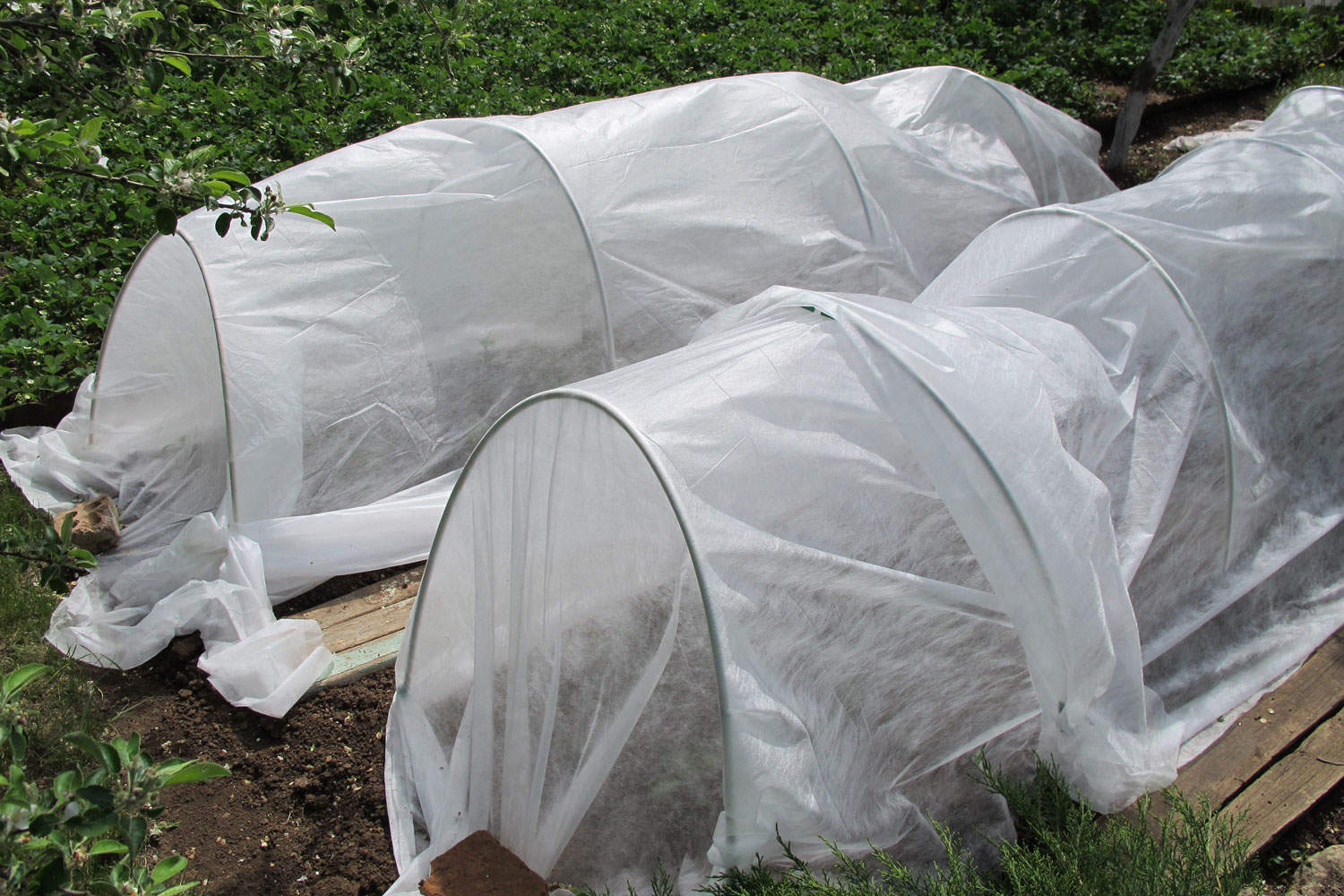As winter sets in with its harsh conditions, including freezing temperatures, frost, and biting winds, your garden faces significant challenges.
Yet, with careful planning and proactive measures, you can avoid the disappointment of seeing your cherished plants succumb to winter's rigors.

Follow these easy tips to keep your garden healthy, protect fragile roots, and prevent soil erosion. With a little care, your garden can do great this winter!
Tip #1: Apply Some Mulch for Insulation
Applying mulch to your garden is a great way to warm your plants. It's best to wait until after the first hard frost to lay down your mulch.
You have plenty of options for mulching materials, such as straw, leaves, wood chips, bark, old hay, sawdust, cotton burrs, evergreen boughs, or even grass clippings.
You'll want to clear out any weeds first. Then, use the fork to fluff up any existing mulch and spread a new layer of mulch, about 2-3 inches thick, over your garden beds.
Just remember a couple of key points:
- Do not pile mulch against the plant stems, which can lead to rot.
- Keep mulch away from buildings; leaving a gap is necessary to discourage rodents.
Tip #2: Cover Your Plants on Cold Nights
A well-placed cover can also make a lot of difference. This shields them from frostbite and windburn.
Lightweight fabrics like burlap, old bed sheets, or even commercial frost cloths are great choices. For more delicate or smaller plants, inverted pots or flower pots can be a quick solution.
You'll also want to set up supports to keep the material from directly touching the foliage to prevent moisture accumulation, which can lead to damage.
Make simple frames with stakes or use wire hoops; even a frame of bent metal rods can do the trick.
As the sun rises and the temperature warms up, remove the cover to prevent overheating. Aim to do this when temperatures are back above freezing (around 32 degrees).
Tip #3: Wrap Your Trees and Shrubs
Along with some covers for smaller plants, you'll want to wrap trees and shrubs with burlap and wrap tape to shield them from frost, wind, and heavy snowfall.
Begin wrapping at the tree's base, moving upward in an overlapping spiral. Then, secure the wrap with twine or tape at the end to keep it in place.
Just be sure to regularly check the wrap to ensure it isn't too tight and that moisture isn't getting trapped.
Tip #4: Raise Your Potted Plants
When the temperature plummets, the ground can become a sponge for the cold, putting your potted plants at risk.
Lifting pots off the ground ensures proper drainage, avoiding the dreaded frozen puddle effect. This also allows air to flow beneath them, which helps regulate soil temperature.
You can use pot feet or stands with wooden and styrofoam platforms to provide an added layer of protection from the cold ground.
Tip #5: Use a Greenhouse or Cold Frame
If you have a lot of time, a greenhouse or cold frame is also a great idea. By creating a controlled environment, these structures enable your plants to thrive even during the coldest months.
Greenhouses not only shelter your greenery from frost and snow, but they also harness natural heat from the sun.
Cold frames, on the other hand, are perfect for hardening off seedlings, extending the harvest of cold-tolerant crops, and starting vegetables early in the season.
Both options offer a buffer against the harsh elements. But we understand that this can also depend on the scale of your gardening activities and the investment you’re willing to make.
Tip #6: Set Up Windshields
Wind can be a fierce adversary in winter, robbing your garden of moisture and throwing around debris that could damage delicate plants.
Erecting windshields, like burlap, plastic sheets, or windbreak netting, provides a gentler environment for your garden.
Start by installing posts to support these materials, ensuring the shields are tall enough to cover your plants. Then, place them where the strongest winds blow, focusing on the most vulnerable areas.
Just remember not to overdo it! The goal isn't to eliminate airflow completely—plants need to breathe—it's to reduce the wind to a gentle whisper.
Tip #7: Brush Snow Off Your Plants
Winter's frosty charm often brings a blanket of snow, transforming your garden into a picturesque scene.
But while it might look magical, that snow can be a heavyweight contender against the well-being of your plants. So — as disappointing as it may sound — you'll need to brush off that accumulated snow!
Why brush off the snow? Well, although snow can insulate plants from extreme cold, too much can cause branches to break and delicate plants to be damaged.
Gently whisk away powdery snow with a soft-bristled broom or your hands. Be careful with icy or packed snow; it clings tight and can damage plants if forcefully removed!
Don't even try shaking tree limbs or shrubs, as this can cause breakage or harm the plant's structure; instead, support the branches from below and carefully lift them to unload the snow.
Tip #8: Use Reflective Surfaces
Keeping your garden plants snug with covers and wraps in the winter can be a lot of work. But hey, you can turn things around with a shiny idea: reflective surfaces!
Adding reflective mulches or strategically placing mirrors can significantly enhance the amount of sunlight your plants receive.
Reflective mulches are especially useful as they serve the dual purpose of maintaining soil warmth and increasing light exposure.
They also have the added benefit of deterring flying insects! The reflected ultraviolet light confuses these insects, making it harder for them to locate their host plants.
Mirrors, positioned to catch and redirect sunlight, can also be an effective tool in areas of the garden that receive less natural light.
Tip #9: Watch Out for Pests
Even in the chill of winter, your garden may not be free from the grasp of pesky pests. Stay vigilant!
As temperatures drop, some pests seek the refuge of your winter vegetables, finding ways to survive and even thrive.
Remember to regularly examine your plants. Look under leaves and near the soil for any signs of insects. Early detection can prevent larger infestations.
Insects are not the only things you should watch out for! Rodents, moles, and voles can also damage lawns and garden beds by burrowing into compost piles and feeding on plant roots and bulbs.
Tip #10: Stay Off Frozen Grass
Walking on your frosty green carpet can lead to damage that only reveals itself once the winter cloak melts away. Grass blades encased in ice are as brittle as glass.
Each unsuspecting step can break the blades, bruising your lawn's chances of bouncing back come spring.
Keep your garden paths clear and redirect foot traffic to protect your grassy areas from becoming a winter casualty.
Wrapping Up Your Winter-Proofing Strategies
As you prepare to wrap up your garden for winter, remember that your plants rely on you for protection against the chill.

Adjust your strategies accordingly, and especially keep an eye on your veggies, as some pests tend to attack winter crops. For additional guidance, see our ultimate guide to garden winterizing here!
Lastly, record your efforts; journaling what worked (and what didn’t) sharpens your strategies for the next winter.
Come spring, you'll be greeted with a thriving garden ready to burst into life, all thanks to your diligent winter-proofing efforts!
